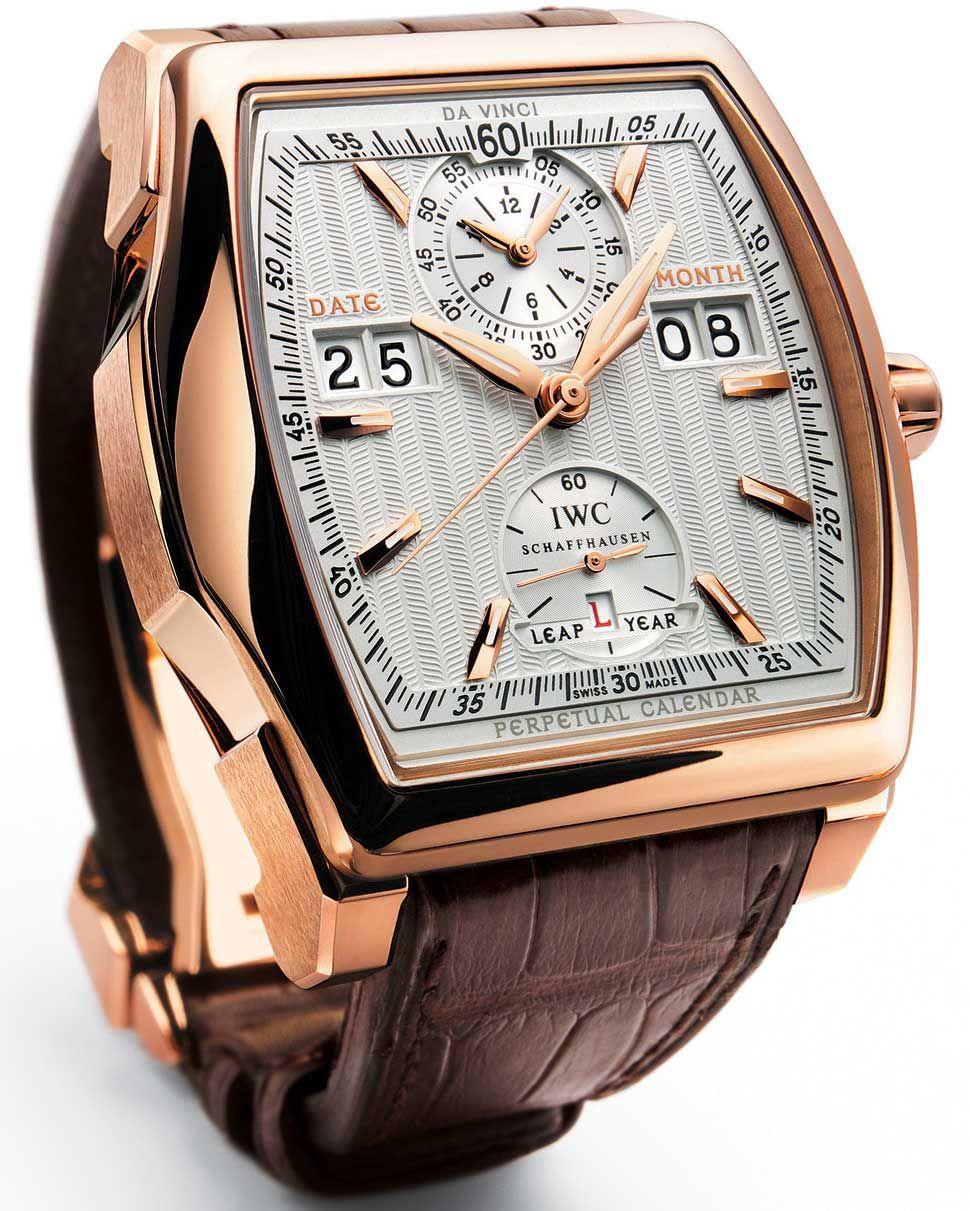In 1884, IWC secured the rights to the Pallweber system, developed by Joseph Pallweber, a Salzburg watchmaker, and started producing the first “digital” watches in IWC’s history. These do not show the time on an analogue display with hands, but with numerals in separate windows. Only the seconds continued to be indicated by a hand. In 2009, 125 years later, IWC presented a new departure in the world of watchmaking: the Da Vinci Perpetual Calendar Digital Date-Month with digital displays for both the date and, for the first time, even the month in large numerals. The power required to switch both month and date discs at the end of the month is accumulated over the course of the entire month in a quick-action switch specially developed for this purpose. At the end of the month, the energy is released and ensures that the displays are advanced, even if the digital leap year also needs to be switched at the same time. The chronograph can run continuously without having any noticeable effect on the watch’s rate and, thanks to the flyback function, can be reset to zero without first having to be stopped. The IWC-manufactured 89800 calibre consists of 474 individual parts and builds up a power reserve of 68 hours. The movement is a miniature powerhouse, in every sense of the term, and a massive watchmaking achievement.
A Big Date For The Perpetual Calendar
- by John

John BUZZUFY
Looking for information on watches, watch parts or watchmaker tools? BUZZUY blog provides valuable information on vintage and modern watches, chronographs, modern timepieces and collectibles. Follow BUZZUFY on Social Media as well for more information and updates. @buzzufy





